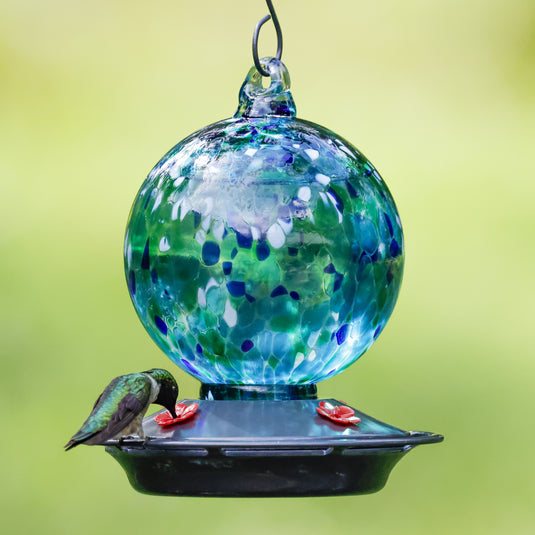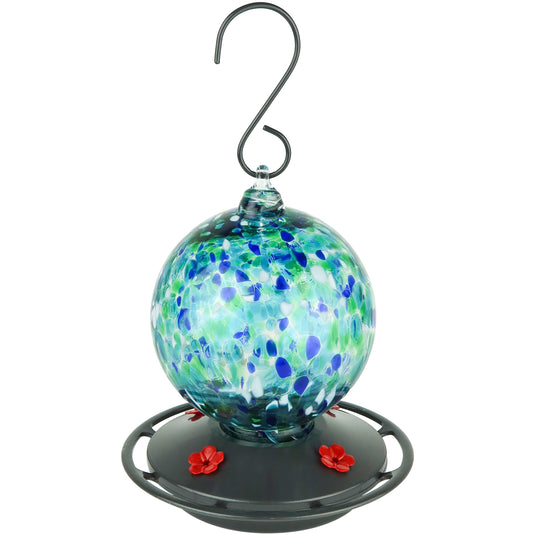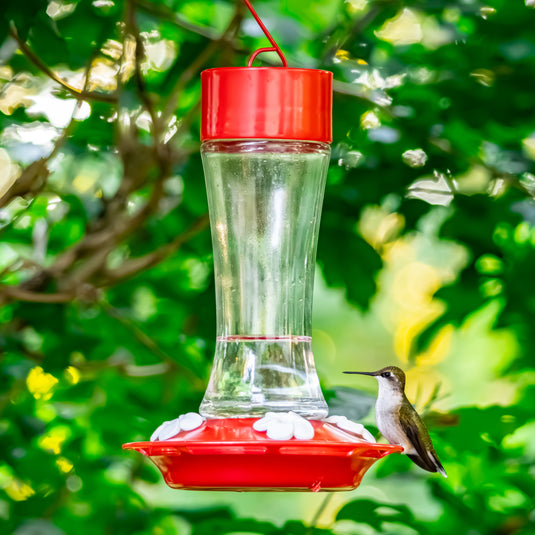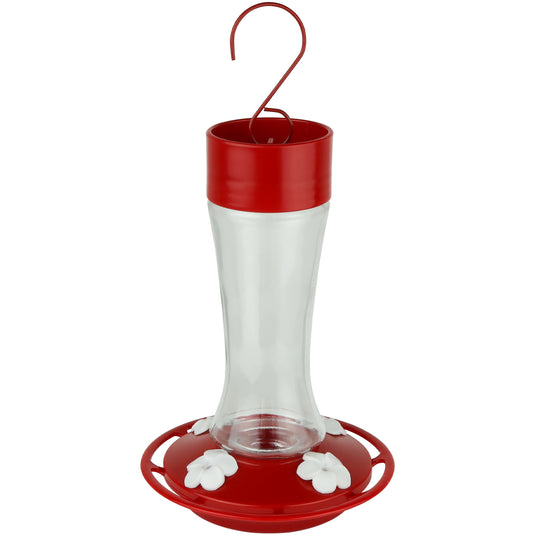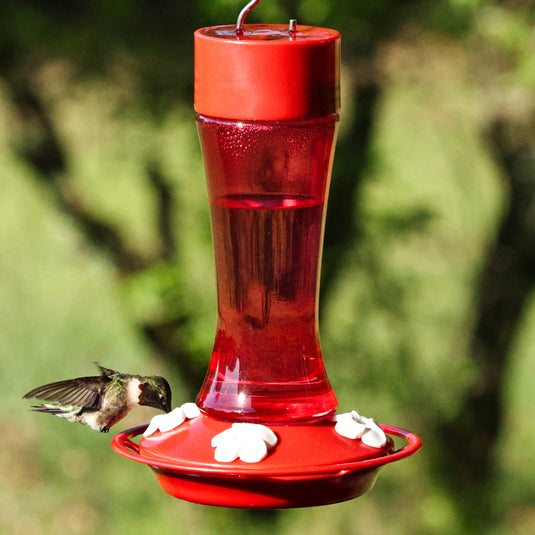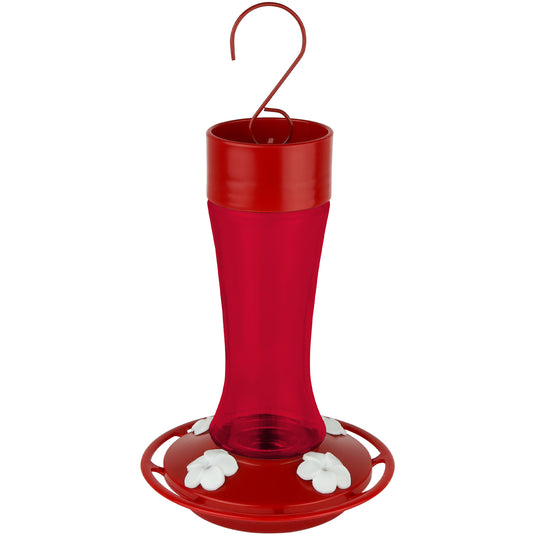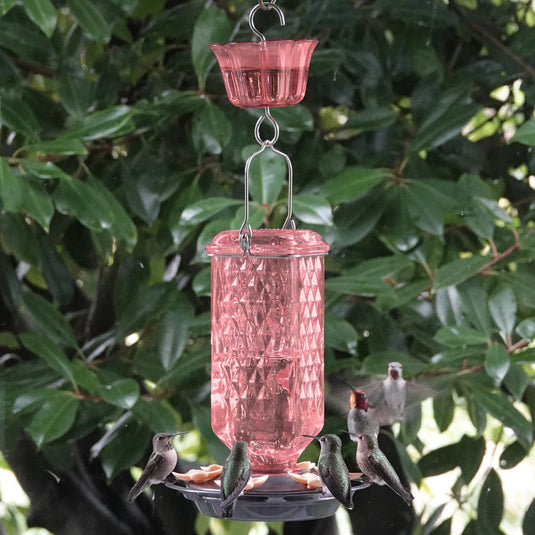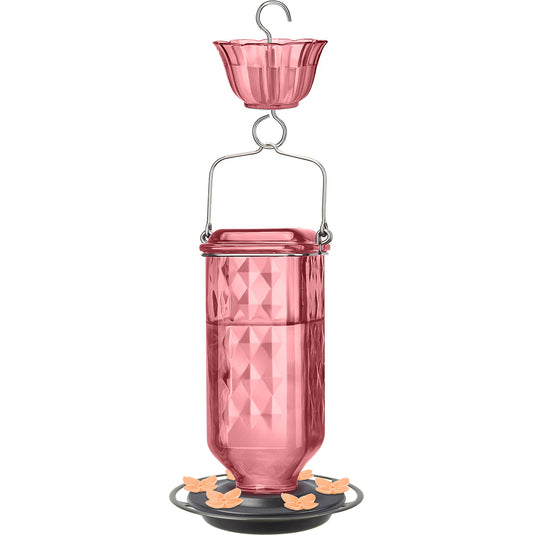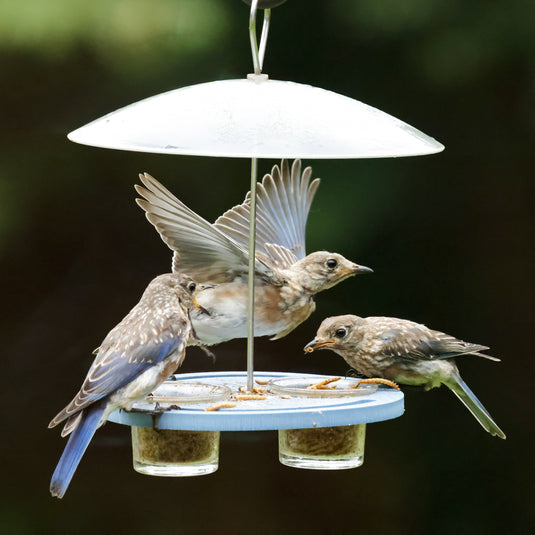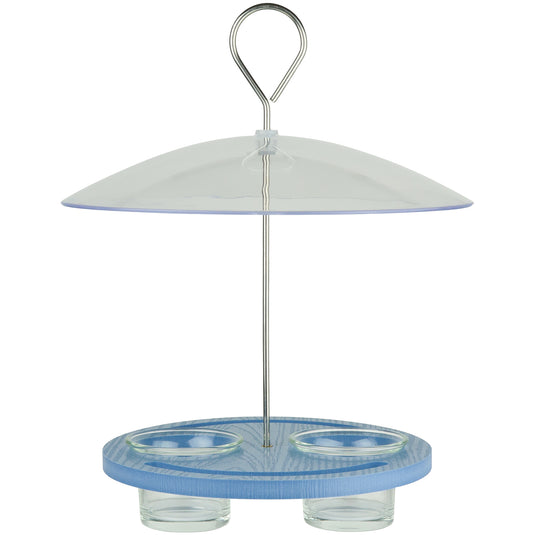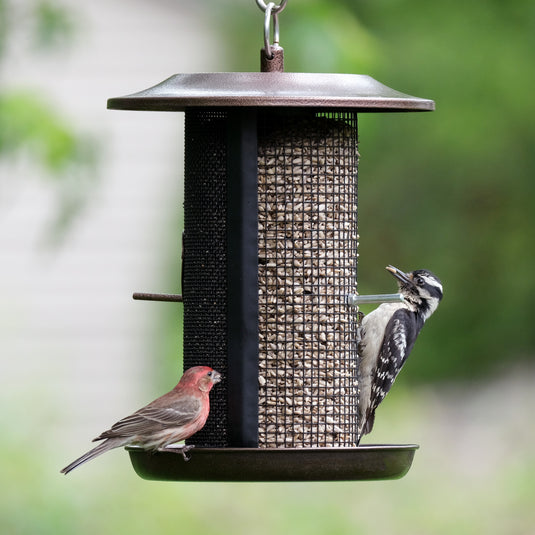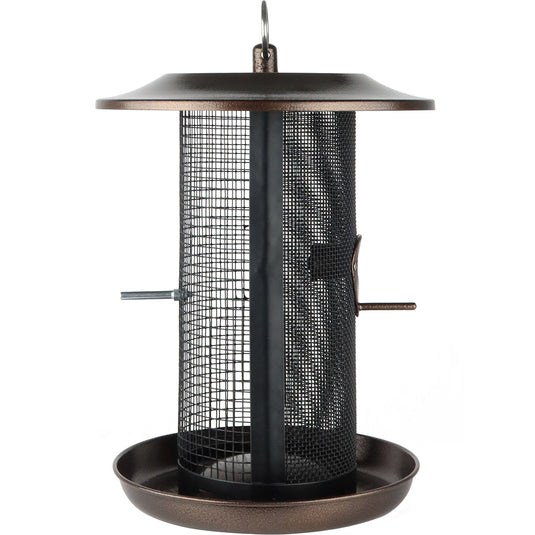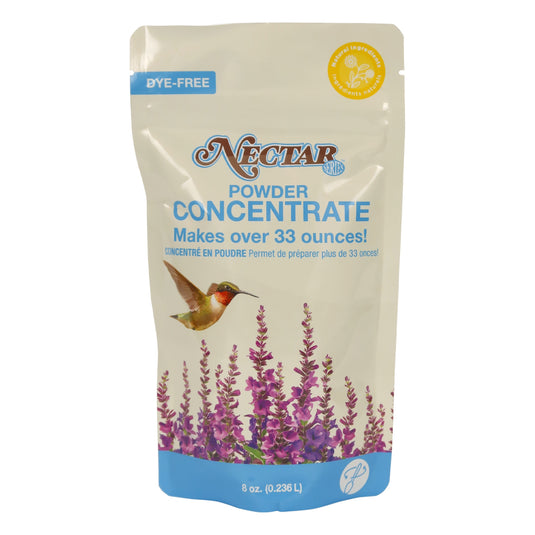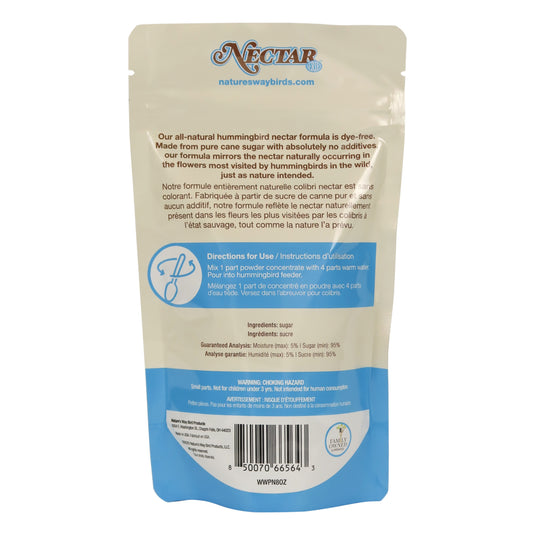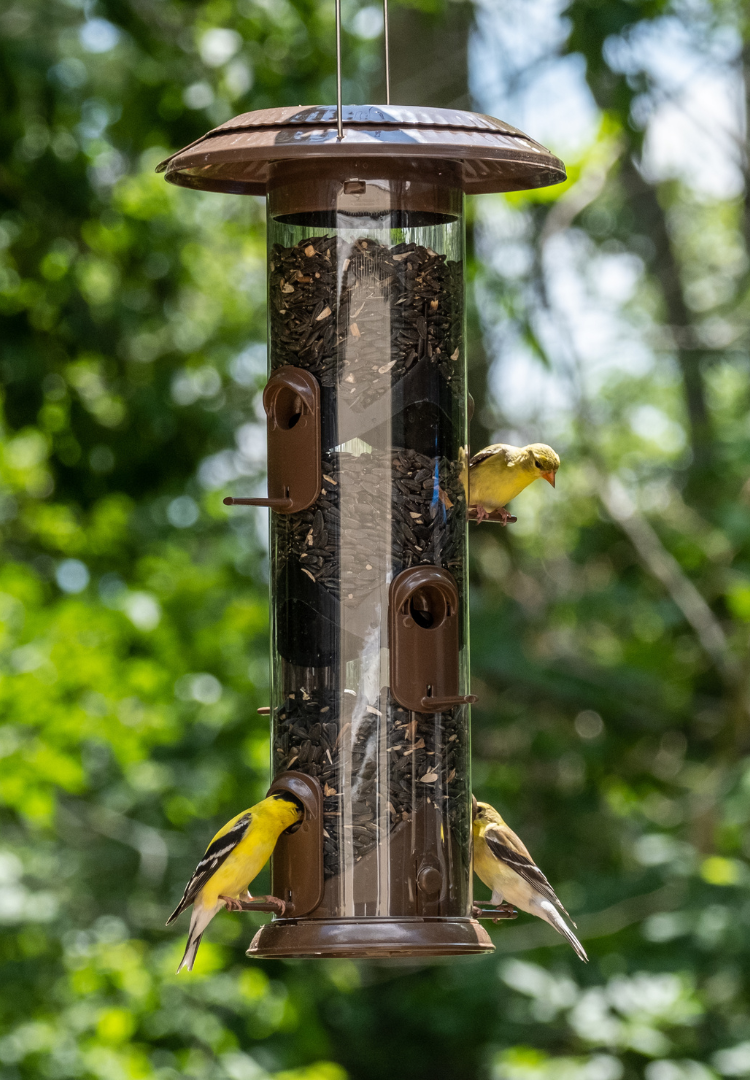Identifying Ruby-Throated Hummingbirds:
Beating their wings on average 53 times per second, these quick little birds are a bright emerald green on the back of the head down to the tail. While both male and female have a grey-white underside, only the males have a very distinct ruby red patch on their throat. The shade of red and size of the patch can vary from bird to bird, with the feathers sometimes appearing very dark until catching the light.


Where Ruby-Throated Hummingbirds Live:
This particular species of hummingbird lives in forest edges, meadows, grasslands, open woodlands, and in gardens, parks, and backyards. During the summer months of breeding season these birds can be found across the Eastern half of the United States and the southern portion of Canada. This is the only species of hummingbird found in the Eastern United States. Despite their small stature, most of these little birds make the amazing trek all the way to southern Mexico for winter months, while a small number may remain in the southern most tip of Florida.
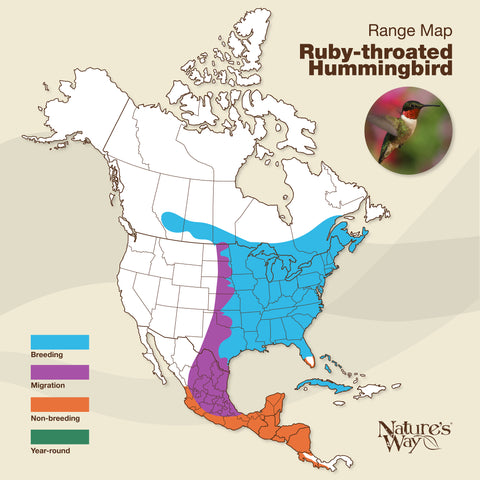
What Hummingbirds Eat:
Ruby-throated hummingbirds feed on nectar from tubular flowers, insects which they catch during flight or may even pull from spider webs, and sometimes tree sap. Hummingbirds will also readily consume artificial nectar from hummingbird feeders. Nectar can be made using a ratio of 1 cup white sugar to 4 cups water. The use of dye or food coloring in artificial nectar is not necessary for attracting hummingbirds to a feeder and is not recommended due to the sensitive nature of these tiny birds.
How to Attract Ruby-Throated Hummingbirds to Your Feeder:
Placing feeders near flower beds or planters may help attract more
hummingbirds to your feeder. For the best chance of hummingbirds discovering your feeder, it is recommended to have it up and ready before they return from their winter migration. Be sure to research the migratory pattern of hummingbirds in your area to make sure you haven’t put your feeder out too late, since this can cause them to overlook it later in the season. Feeders with built in perches can help these tiny birds conserve energy and feel more comfortable feeding, prolonging feeding times and increasing hummingbird viewing.

Nesting:
Nests are typically built on a slender branch between 10-40 feet off the ground but have also been found in more surprising locations such as wire, loops of chains, and extension cords. Roughly the size of a large thimble (1 inch deep and 2 inches wide), the female builds the nest out of thistle or dandelion down held together with strands of spider silk and sometimes pine resin and camouflages the exterior of the nest with lichen or moss.
A typical clutch size can range from 1-3 eggs that are roughly 0.3 inches wide and 0.5 inches in length. The tiny eggs are white and weigh less than half a gram. Eggs hatch in roughly two weeks and will fledge the nest after an additional 18-22 days.
Related Articles:
Are you ready for hummingbird season?






